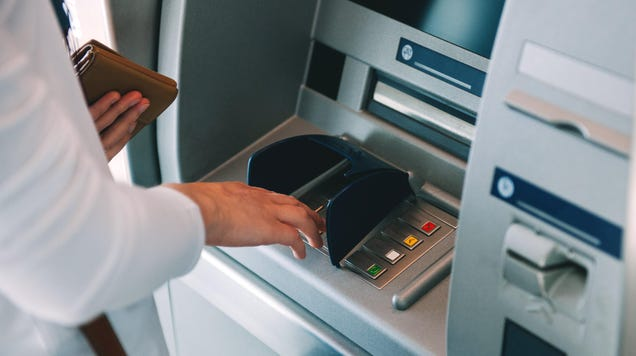Overdraft Fees vs. Nonsufficient Funds Fees: What’s the Difference?
Nov 18, 2024 By Marie White
Advertisement
Are you curious about the difference between an overdraft fee and a nonsufficient funds (NSF) fee? You’re not alone–confusion surrounding these two banking terms is common! That’s why we put together this helpful guide to explain the distinction.
In this blog post, we'll break down both fees so that you can make informed decisions about protecting your finances from unexpected costs. Let's start by discussing the differences between overdraft and NSF fees!
Overview of Overdraft Fees vs. Nonsufficient Funds Fees

When managing your finances, understanding the difference between overdraft and nonsufficient funds (NSF) fees is essential. Both of these charges are associated with insufficient money in a bank account, but they have different definitions and can vary significantly depending on your financial institution.
What is an Overdraft Fee, and How Does it Work
An overdraft fee is a bank's penalty when a customer exceeds the available balance in their checking or savings account.
When the customer attempts to make a purchase, withdrawal, transfer, or other transaction resulting in insufficient funds, the bank will cover the charge but assesses an overdraft fee.
The exact amount of the fee varies by bank but usually ranges between $25 and $35. The overdraft fee is on top of any normal transaction fees that apply to the purchase or withdrawal.
What is an NSF Fee?
An NSF (non-sufficient funds) fee or Returned Item Fee is charged when a check you wrote bounces due to insufficient funds in your account.
NSF fees vary by bank but typically range from $25 to $35 for each bounced check. This fee is in addition to any overdraft fees that may have been incurred when the check was initially written.
Difference Between an Overdraft Fee and a Nonsufficient Funds Fee
When it comes to your bank account, there are a few different types of fees that you might be charged. Two of the most common fees are overdraft fees and nonsufficient funds fees. So what is the difference between them?
An overdraft fee is typically incurred when a customer has insufficient funds in their checking account to cover a check, debit card purchase, ATM withdrawal, or other type of transaction. The fee is usually flat and applies when the customer’s balance exceeds zero.
A nonsufficient funds fee occurs when insufficient funds are in the customer’s account to cover a check, debit card purchase, ATM withdrawal, or other type of transaction.
This fee does not apply when the customer’s balance goes below zero. Instead, it is charged if there are never enough funds in the account to cover the transaction.
These fees can be quite costly and add up quickly if you often find yourself in this situation. Knowing these differences is important to avoid them and keep your bank account healthy.
How to avoid overdraft fees and non-sufficient funds fees

Here are three tips to avoid overdrafts and non-sufficient fund fees.
1. Choose the right account:
Some accounts offer free overdraft protection, while others charge you a fee whenever your account balance is negative. Do your research and find the best bank that fits your financial situation and goals.
2. Monitor spending:
Knowing how much money is in your account can help you plan before purchasing and avoid going over budget. Check your balance regularly to help you stay updated and control your finances.
3. Set up overdraft protection:
Setting up overdraft protection will cover purchases that exceed the account balance but won't protect against non-sufficient fund fees. Ensure you understand your bank's coverage before setting up this service.
Why overdraft and NSF fees are down
Recent regulatory changes in the banking industry have significantly decreased overdraft fees and nonsufficient funds (NSF) fees. Banks are now required to get customer’s consent before charging them for overdrafts, which has resulted in an overall reduction of such fees.
Banks may be more willing to waive or reduce NSF fees if customers have a track record of making regular deposits into their accounts.
How much do banks earn in overdraft and NSF fees?
Banks make much money from overdraft and non-sufficient funds (NSF) fees, often charging as much as $35 for each fee. The Consumer Financial Protection Bureau estimates that U.S. banks earned more than $11 billion in 2017 from overdraft fees alone, with an additional $2.5 billion coming from NSF fees.
What's the difference between overdraft fees and NSF fees?
A bank can authorize or decline the transaction when you purchase more than what’s available in your account.
An overdraft fee will be accessed if the bank authorizes the transaction despite insufficient funds; an NSF fee is charged if the bank declines the transaction due to la ack of funds.
The main difference between overdraft and NSF fees is that an overdraft fee can only be charged if a bank decides to approve a transaction when you don't have enough money in your account, whereas an NSF fee is accessed if the bank denies the transaction due to insufficient funds.
Overdraft fees apply each time the bank approves a transaction that overdraws your balance, while NSF fees only apply once per declined transaction.
Both fees are costly and can add up quickly if you don’t manage your account properly. To avoid these fees, it’s important to keep track of your spending so you know when your account balance is low and can plan accordingly.
FAQs
What is a nonsufficient funds fee?
A nonsufficient funds fee is an additional charge imposed by a bank or financial institution when a customer's account balance does not have enough money to cover a check or other transaction. This fee is also known as an overdraft fee.
What is an overdraft fee?
An overdraft fee is a charge imposed by a bank or financial institution when a customer's account balance is insufficient to cover the amount of an item being presented for payment. It is also a nonsufficient funds fee and can be very costly.
What is paid overdraft item fee for nonsufficient funds?
A paid overdraft item fee for nonsufficient funds is a charge imposed by a bank or financial institution when a customer's account balance does not have enough money to cover the cost of an item presented for payment. This fee is also known as an NSF or non-sufficient funds fee and can often be costly if not managed properly.
Conclusion
In conclusion, overdraft and non-sufficient funds fees are two types of banking charges. Overdraft fees occur when you exceed your balance during the day, while nonsufficient funds fees happen when your account needs more money to cover a transaction.
Understanding the difference between the two is important to manage your finances more responsibly.
Advertisement

Kelly Walker Nov 29, 2024
Void Transaction Definition
36346

Kelly Walker Nov 03, 2024
When A Stock Splits, What Happens To The Option On That Stock?
49917

Rick Novak Aug 24, 2024
Unveiling Shares Outstanding: A Comprehensive Guide
40612

Kelly Walker Oct 12, 2024
Fidelity National Home Warranty Review
78818

Kelly Walker Aug 02, 2024
Is Your Retirement Plan on Track?
31697

Kelly Walker Aug 04, 2024
Silicon Valley: Why Is It a Startup Heaven?
8621

Rick Novak Nov 26, 2024
Methods that Help Goldman Sachs Make Mone
36033

Kelly Walker Dec 16, 2024
A Comprehensive Comparison: Priceline vs. Hotwire
37344